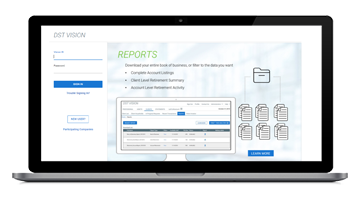What is a carry trade?
A carry trade is an investment strategy that’s most often associated with foreign currency trading. We explore how the strategy works, why it’s a common trading strategy in various investment funds, and why the unwinding of the yen carry trade has been roiling global markets.

A carry trade is an investment strategy where an investor borrows money in a currency with a low interest rate and invests in another currency that offers a higher interest rate. The investor does so with the aim of profiting from the interest-rate differential between the two currencies.
Investors might also implement a carry trade by borrowing funds in a low interest-rate currency and using those funds to invest in any asset with a higher expected return such as equities or cryptocurrency.
Effectively, a carry trade is a return that an investor generates for holding, or carrying, an asset such as a currency or commodity for a period of time. Although this type of strategy doesn’t always rely on the appreciation of the asset, this can factor into the trade’s risk.
While carry trades are widely used in foreign currency investing, the strategy comes with a high degree of risk and requires the right market conditions and investment expertise to execute successfully. Understanding interest-rate differentials, exchange rate dynamics, and global market conditions is crucial for those considering this type of strategy.
What are common carry trades?
Popular foreign currency carry trades have often involved the yen due to the Bank of Japan’s loose monetary policy over much of recent history, including eight years of negative interest rates. This monetary policy stance led to a weak yen, creating an opportunity for global investors to pair it with the U.S. dollar within a carry trade to extract returns.
In practice, investors would borrow in Japanese yen—effectively paying 0% interest—and buy U.S. dollars, earning 5.5% at prevailing rates, minus trading fees and applicable costs. They could also use their newly acquired U.S. dollars to fund investments with a higher expected return.
Borrowing in JPY to invest in the USD has been a common carry trade
Central bank rates, 1/1/09–8/5/24 (%)
What are some of the risks?
The primary trading risks of this type of strategy include volatile currencies or changes in interest rates, which can quickly affect the carry trade’s profitability. This risk is evident in the recent unwinding of the yen-U.S. dollar carry trade, which has triggered a dramatic global sell-off in risk assets.
In March 2024, the Bank of Japan reversed its long-standing monetary policy stance and increased interest rates for the first time in 17 years, moving short-term interest rates out of negative territory. Then, in late July, the central bank raised its key interest rate to 0.25%, surprising markets that had largely expected rates to remain unchanged. This shift in Japan’s monetary policy, coupled with weakening U.S. economic data, caused the yen to appreciate significantly in recent weeks.
The yen has seen rapid appreciation in recent weeks
JPY–USD spot exchange rate
In a carry trade, the potential gains from the interest-rate differential can be eroded by appreciation of the lower-yielding currency. It appears that many investors are now unwinding their carry trade positions as the yen appreciates while the interest-rate spread narrows. Should the U.S. Federal Reserve begin easing in September, this would further narrow the interest-rate differential.
As global yen carry trades are unwound and more yen is purchased to pay off yen-denominated loans, this could potentially cause further appreciation of the yen, making the carry trade less attractive and potentially sparking further unwinding of positions. Since these positions often involve leverage, this rapid unwinding has also caused volatility to spill over into other asset classes as investors sell off risk assets in favor of safer holdings.
Which investment strategies use carry trading?
As the current market backdrop exemplifies, carry trading can be a high-risk strategy; therefore, it requires expert risk management to minimize the potential for large losses. Alternative investment strategies, including global macro funds and other hedge funds, use carry trading and may combine it with positions that can also take advantage of the momentum in exchange rate movements. Beyond alternative investments, a range of other investment strategies may use carry trades too. Managers undertake extensive research and fundamental analysis, formulating views on central bank policy and country-specific and global macroeconomic drivers. It’s important to choose a skilled investment manager, especially when considering complex investment strategies. While carry trading is often used within currency markets, it’s a trading style that’s also executed across commodities, fixed-income, and equity markets.
Important disclosures
Portfolios that have a greater percentage of alternatives may have greater risks. Diversification does not guarantee a profit or eliminate the risk of a loss. Past performance does not guarantee future results.
MF3773677





